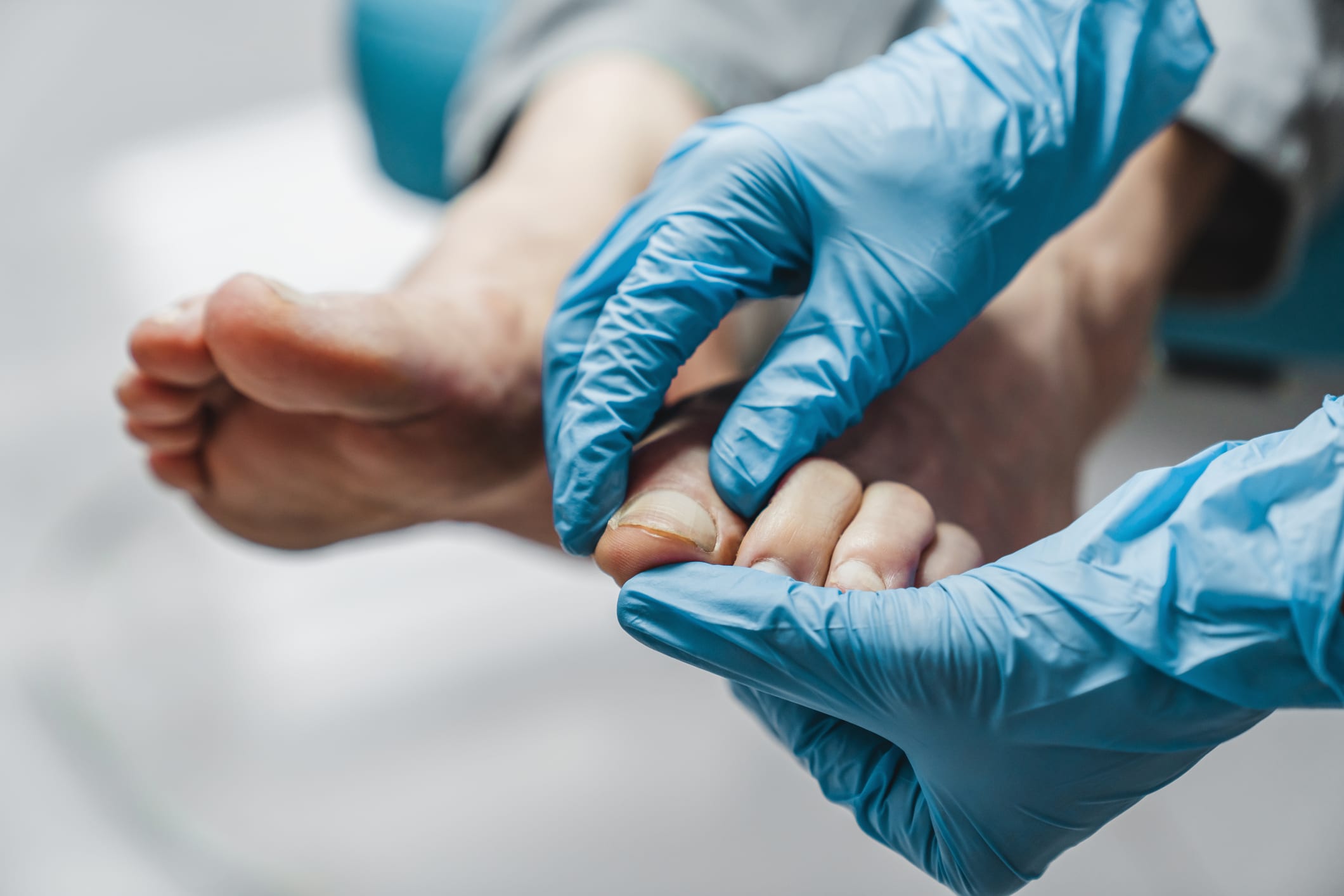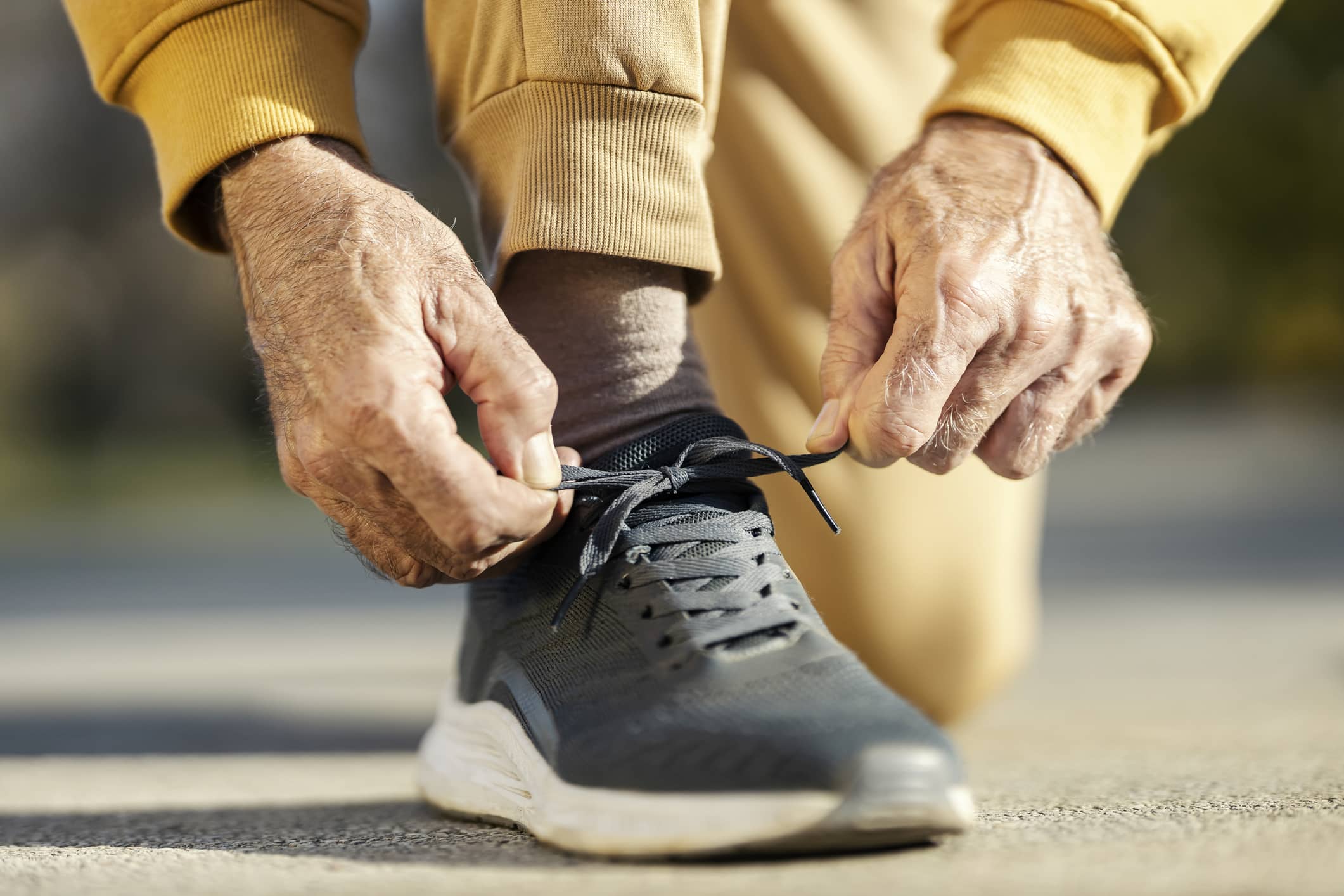For millions of Americans having a little more trouble walking than usual, whether due to leg pain or weakness, it’s all too easy to shrug the symptoms off. After all, you may think a little weakness in your legs is normal as you get older, especially if you’re over 60. But a condition called peripheral artery disease could be the culprit—and it’s not something to take lightly.
Peripheral Artery Disease (PAD) is an extremely common vascular disease, affecting the lives of nearly 12 million people in the U.S. PAD can be devastating if left untreated, taking a huge toll on individuals and families. But screening and treatment can—and do—save lives.
That’s why we’re here to answer your most frequently asked questions about diagnosing and treating peripheral artery disease.
What are the typical symptoms of peripheral artery disease?
The most common reason that people visit the doctor for PAD testing is leg pain while walking. Many patients report aching, tingling, or cramping pain when they move around or exercise, which may occur in the hip, thigh, calves, or even the feet or buttocks.
That said, up to 40% of people with PAD don’t experience any leg pain. An even higher number may have no symptoms at all. If you have a relative with PAD, are a smoker, have heart disease or diabetes, or are over 60, you should have a PAD screening test.
Other warning signs to watch for include:
- Coldness in the feet or legs
- Slow-healing wounds or infections
- Pale, bluish, or discolored feet
- Numb toes
- Weakness in the leg muscles (known as muscle atrophy)
- Hair loss or smooth, shiny skin on the legs
What is the most common cause of PAD?
PAD is caused by a buildup of fatty deposits, or plaques, inside your arteries. These cholesterol-heavy plaques restrict blood flow from your heart to your legs, leading to pain, weakness, and difficulty walking, among other complications. But what causes these deposits to develop in the first place?
Many cases begin with lifestyle. Current and former smokers are at very high risk for developing PAD—in fact, regular smokers are 4 times more likely to develop it than lifetime non-smokers. A lack of exercise and diet high in cholesterol can also lead to narrowed arteries in the legs.
The disease can also be hereditary. If someone in your family was diagnosed with PAD, you need to tell your doctor and start a screening plan to monitor your health.
Is PAD related to heart failure?
Yes—left untreated, PAD can significantly increase your risk of heart failure and other serious problems involving your blood vessels, such as stroke and heart attack, among others. Most people don’t think about their hearts when they feel leg pain—but that’s why it’s so important not to ignore your symptoms!
If you have any persistent pain or weakness in your legs, visit a podiatrist with advanced testing techniques, like Lakes Foot & Ankle Associates!
What are the long-term effects of PAD?
Over time, PAD begins to seriously interfere with your daily activities. The leg pain and weakness it causes can eventually impact your ability to walk. In extreme cases, patients have experienced chronic ulcers on their legs, gangrene, and even amputations. Your risk for potentially fatal cardiovascular issues also continues to increase the longer PAD goes untreated.
Can peripheral artery disease be reversed?
While there is no cure for PAD, there are plenty of interventions to slow its progression and potentially reverse some of the symptoms. PAD is a widely studied condition, and treatments are improving every day.
Like the disease’s risk factors, its treatments are largely based on lifestyle changes, like quitting smoking. The most effective treatment for PAD is regular exercise. Talk to your doctor about starting an exercise routine, as they may recommend a supervised training program to get you started safely. You may start off with light, targeted leg exercises that can get you back on your feet!
We also recommend a healthy diet focused on limiting and managing cholesterol. For many in the early stages of PAD, a change in diet can make all the difference!
A low-cholesterol diet is:
- Rich in high-fiber fruits and veggies like apples, bananas, raspberries, broccoli, and avocados
- High in soluble fiber, including whole grains and legumes, like beans, lentils, and black-eyed peas.
- Low in sodium (salt)
- Limited in saturated fat and trans fat—choose healthier fats from lean meats, oils, and nuts instead.
How is peripheral artery disease diagnosed?
Managing PAD starts with understanding your risk factors, which you can do with Smart ABI Testing. This highly sophisticated tool measures your blood pressure and your ankle-brachial index (ABI). In essence, that means we compare the blood pressure in your arms to the blood pressure in your ankles using specialized inflatable cuffs.
Unlike regular blood pressure cuffs, the ABI tool takes a series of targeted readings along your arteries that help us determine whether you’re at a normal, borderline, or severe risk for PAD. We can then send this detailed information to your primary care physician, cardiologist, or any other member of your care team that needs to know your results.
More Questions? We’re Here to Help!
At Lakes Foot & Ankle Associates, we have the latest Smart ABI Testing tools available, and we’re here to help you get a head start on a healthier life. This 5-minute, painless procedure could save your life! If you’re experiencing any symptoms of PAD, or you know you have the risk factors, set up your PAD screening with us today.
Get Your Peripheral Artery Disease Test in Commerce Twp, MI
At Lakes Foot & Ankle Associates, we’re proud to offer leading-edge preventive testing, diagnostic, and treatment options under our comprehensive philosophy of care. We’re invested in your whole health and well-being, and will always be a resource for you as you manage any leg, ankle, or foot condition. To schedule your appointment, call (248) 452-2288 or reach out online!
| Monday | 8:30am – 5:00pm |
| Tuesday | 9:00am – 5:00pm |
| Wednesday | 8:30am – 5:00pm |
| Thursday | 9:00am – 6:00pm |
| Friday | 7:30 am – 4:00pm |
| Saturday | – Closed – |
| Sunday | – Closed – |



